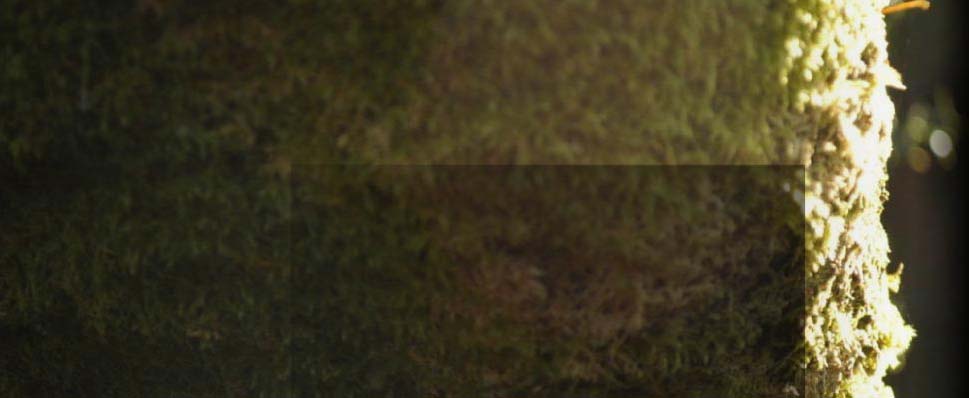 Tree Esoterics
Tree Esoterics
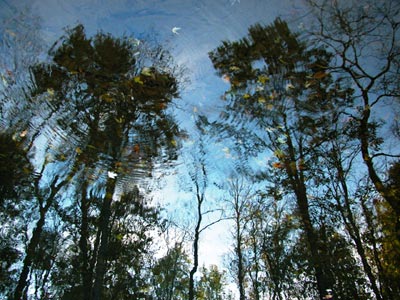
photo by CaptPiper
Introduction
Tree Esoterics, a pioneering and holistic approach to the study of trees, works with the following basic recognitions:
- Trees are first and foremost fields of energy.
- Secondly, they are fields of living energy.
- Thirdly, they are fields of intelligent living energy.
- Fourthly, as fields of energy, each tree species has its own unique vibrational qualities.
Science, including those relating specifically to trees, tends to ignore these fundamental facts. As the famous Austrian forester Victor Schauberger pointed out in the last century, science tends to think an octave too low. This leaves it with a predominantly or often exclusively materialistic approach. Consequently, most people, including those who spend their lives working with trees, acquiring recognition as ‘tree experts’, fail to see or understand trees in their wholeness, one that is truly multi-dimensional.
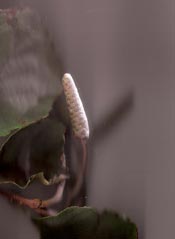
image by Harper Stone
One of the aims of The Living Tree Educational Foundation is setting up a Faculty of Tree Esoterics for the study of trees with these basic recognitions.
Acknowledging trees in the fullness of their multidimensional wholeness, as fields of intelligent living energy, opens the student, the researcher, and all who work with trees, to the possibility of acquiring new knowledge and understandings of practical significance. Two of the greatest plant-breeders of all times, Luther Burbank and George Washington Carver, worked co-creatively with an awareness of the intelligence of trees and plants in the late nineteenth and early twentieth century, enabling them to achieve practical results that many considered miraculous. See below, ![]() Horticultural Geniuses: Burbank & Carver.
Horticultural Geniuses: Burbank & Carver.
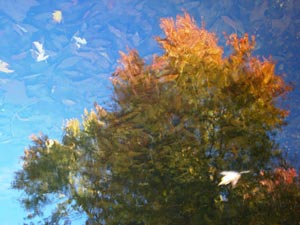
photo by CaptPiper
Faculty of Tree Esoterics
The Living Tree Educational Foundation is developing course modules for a Faculty of Tree Esoterics – as a Faculty of Higher Learning for Horticulturalists, Arboriculturalists, Cutting Edge Scientists, Mystics & Tree-Loving Esoterics. Subjects will include:
Trees in their Multi-Dimensional Wholeness
Studying trees as fields of intelligent living energy, as indicated above.

'Embrace the Sky' - photo by CaptPiper
Trees in a Cosmic Context and the Earthly Significance of this
This will include studying the function of trees as fields of energy in relation to the Earth’s energy-field, including their believed function as transducers of cosmic energy, for which there is some scientific evidence. It will include studying the life of trees in relation to phases of the moon, recognizing that there are ideal times for sowing, planting, pruning, felling, harvesting, and other aspects of tree husbandry, tree-crop cultivation and forestry, in relation to these phases; and also the relationship between the energy fields of trees and those of planets.
Trees in Healing
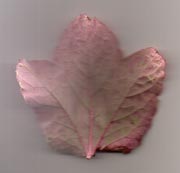
image by Harper Stone
This will include studying the vibrational qualities of different tree species, their vibrational healing properties as well as believed spiritual properties, including those of their essential oils. Activities will include compiling and disseminating information on the healing properties of trees (believed and/or established), their parts (leaf, bark, sap, blossoms, etc), and products.
Healing of Trees & Forests
This will include studying the evidence for the healing of forests through radionics and other vibrational treatments, carries out field trials in relation to this, documents and promotes verifiable knowledge.

photo by Fillipe Ferreia
Extending the Fields of Horticultural and Arboreal Sciences by Extending the Experiential Capabilities of its Practitioners 
This is both a mystical component as well as one of huge practical significance in our studies. Scientists in whatever field tend to be sensorially disconnected from the information and theories they work with, which, as Buckminster Fuller (amongst others) has pointed out, results in gross misconceptions about the nature of reality. Indigenous people (along with horticultural geniuses such as Luther Burbank and George Washington Carver) gather their knowledge of the medicinal and other properties of plants and trees directly through their attunements with them as ‘living fields of information’. One of the aims of the Faculty of Tree Esoterics is to provide training in such approaches.
see more ![]() Attuning to Trees
Attuning to Trees
Trees as Expressions of Living Intelligence 
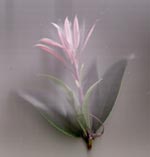
image by Harper Stone
The Faculty will be conducting experiential explorations of trees through attuning to their energy-fields. It will also be exploring the possibilities of communication with their inherent and/or over-lighting intelligences – using kinesiology as a feedback mechanism. Both Luther Burbank and George Washington Carver acknowledged their debt to the living intelligences of trees, shrubs and plants, and their own ability to communicate with them. They took this intelligence as a fact and worked with it.
Co-Creative Relationships with Trees
The Faculty explores the possibilities of co-creative relationships with the intelligences of trees in practical contexts, facilitating this through kinesiology. It also promotes knowledge of what has already been achieved by such approaches.
Spiritual Perspectives on Tree-Planting

Banyans in Lumbini, Nepal
image by mafate69
The Faculty promotes spiritual perspectives on tree-planting. As expressed by the Acacia in Gospel of the Living Tree by Roderic Knowles, “The Divine Mission of this age is the healing of Planet Earth.” The planting of suitable trees (depending on location) is one of the greatest acts of Earth-healing in which we humans can become engaged. The Faculty sees tree-planting not simply in terms of survival necessities, but also as a sacred even ‘godly activity’, as in the words of Shastri Athavale of India. It promotes the creation (rather, co-creation) of Sacred Groves and Woodland Sanctuaries.
see more: ![]() Sacred Groves
Sacred Groves
Integration of Trees & Spiritual Practice
Attuning with trees and entering into an experience of oneness with them is a spiritual practice; as is meditating beneath trees; as are awareness walks in the shade of trees. For those who are interested, the Faculty facilitates and conducts these and other exercises, both in the presence of trees as well as symbolically with trees using guided visualizations and meditations. Accounts of those who have had mystical experiences with trees will be studied, as will the role played by trees historically in human consciousness and culture.
see more: ![]() Tai Tree
Tai Tree
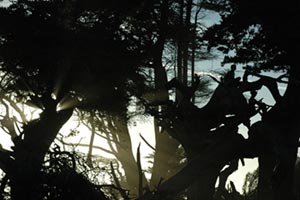
photo by Wonderlane
Vision Quests
The Faculty will be encouraging the undertaking of personal retreats and Vision Quests in nature, particularly in forest or woodland settings.
Active Engagement in Research &
Dissemination of Information
Members of the Faculty will be involved in researching information on subjects relating to the above and making this available through publications and/or via the internet.
![]()
Horticultural Geniuses: 

Luther Burbank with spineless cactus, 1908
Luther Burbank 
During his life, Burbank introduced over a thousand new plants, averaging one never-seen-before specimen every three weeks of his working career. The Burbank Potato is named after him. He achieved his results by talking with his plants, showering them with his love, and stating his requirements. “He was not sure that the shrubs and flowers understood his words,” wrote the philosopher Manly P. Hall, “but he was convinced that by some telepathy they could comprehend his meaning.”
A Dutch professor, Hugo de Vries, a geneticist who was later to become celebrated for carrying forward Darwin’s life work with his own theory of mutation, visited Burbank and wrote of his work that “its value for the doctrine of evolution compels our highest admiration.” Burbank’s understanding of evolution was clear, while clearly non-Darwinian: Intelligence is both present and at work within Nature, within all its forms, including trees and plants; and we, as humans, can work consciously with it – evolving new forms even – as co-creators.

George Washington Carver 

photo by Frances Benjamin Johnson, 1906
The other great American plant breeder, a horticulturalist and agricultural chemist, George Washington Carver, born just before the American Civil War, had to overcome the severe handicap of being black and of slave descent. As a kid he started a garden hospital in the woods where he cared for sick plants and developed a reputation for healing them. People in the area used to bring him their ailing specimens. When asked how he could perform such miracles, he replied softly: “All flowers talk to me and so do hundreds of little living things in the woods. I learn what I know by watching and loving everything.”
He is particularly remembered for his achievements in cultivating peanuts, which had lived a humble virtually unknown existence in the wild before their phenomenal rise to prominence; and for the development of products such as peanut butter and oil. By 1930, he had turned their one-time worthlessness into something approaching a billion dollar industry for southern farmers. But these were achievements among many. Henry Ford thought him “the greatest scientist living” and tried unsuccessfully to employ him. The renowned inventor, Thomas Edison of light bulb fame, also tried and was unsuccessful in spite of offering an astronomical sum. “Carver is worth a fortune,” he declared. But Carver was not interested in fortunes and, unlike Edison, never took out patents. Wherever his fertile mind turned, he discovered new products, which made fortunes for others.
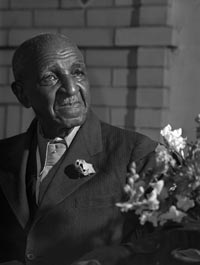
Portrait of Carver, 1948 by
US Farm Security Administration
But it wasn’t simply his fertile mind. He worked with the same recognitions as Burbank, acknowledging the intelligence of plants and communicating and cooperating with them. It was through his attuning to their intelligence that they revealed their gifts. He knew, too, that Nature Spirits, which he had encountered in the woods of his youth, took an active part in their growth. Like Burbank he baffled everyone, scientists in particular, with the seemingly meaningless simplicity of his replies. “The secrets are in the plants,” he would say. “To elicit them you have to love them enough.”
 Acknowledgements
Acknowledgements
The above extracts are from Gospel of the Living Tree: for Mystics, Lovers, Poets & Warriors by Roderic Knowles, published by (and available online from) Earth Cosmos Press




